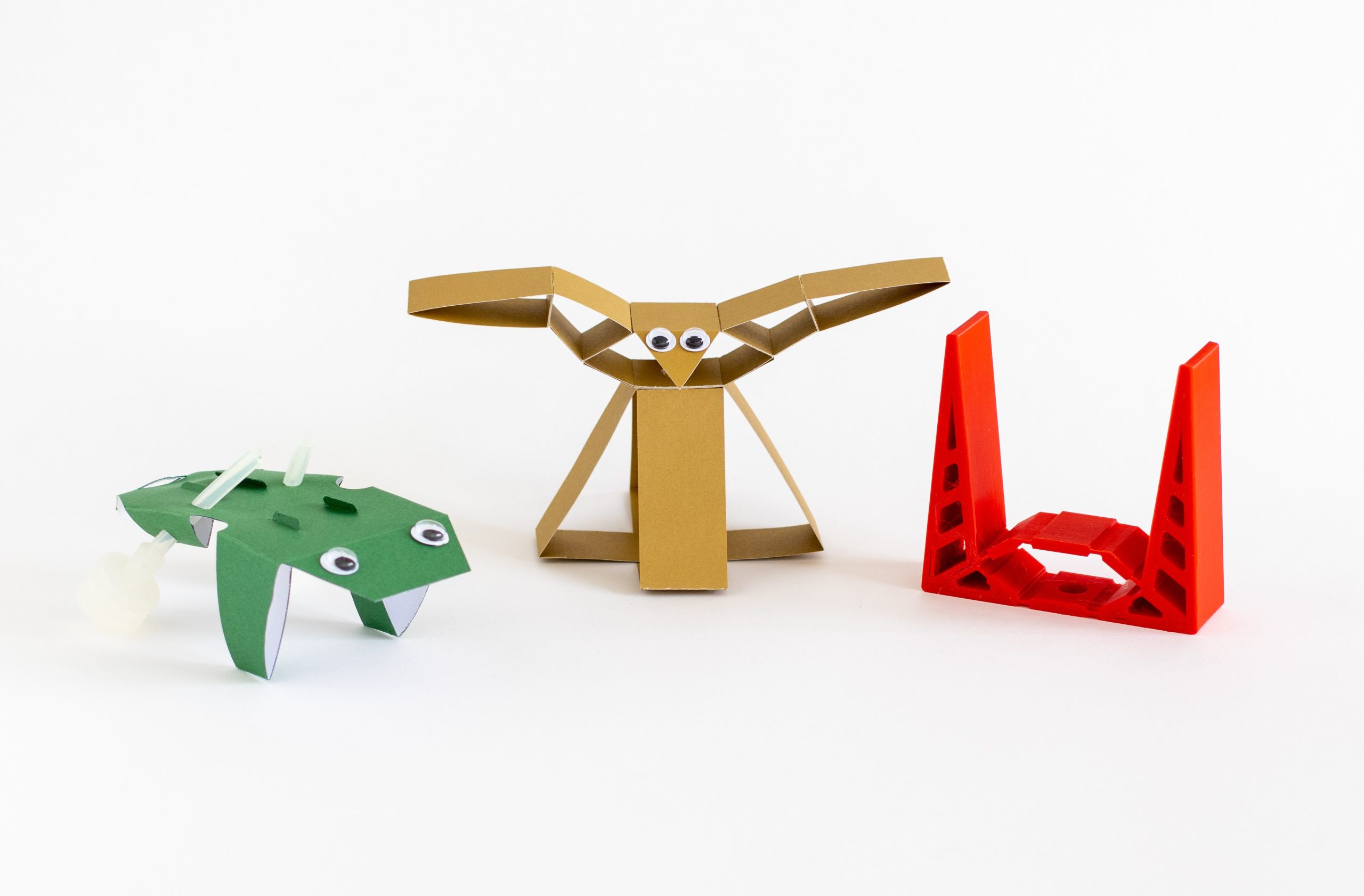FMP: Soft Circuits Toolkit
About the project
The Soft Circuits Toolkit is a collection of fully soft, pneumatic components accompanied by a paper manual and online platform filled with information on components and example circuits. It aims to lower the barrier of entry to the soft robotics field, and additionally teach electronics through the fluidics analogy. I designed the toolkit in the Soft Robotic Matter group at AMOLF in the Netherlands.
Development
This semester, I continued with a project for which I had already completed a first working prototype, and early in the M2.2 phase I often received the question: “So what have you added to the toolkit? It still looks the same.” This meant I had to bring the project to the next level, which was a challenge. Based on the recommendations I had set up at the end of the M2.1 phase, I was able to quickly develop the components that the toolkit needed to enable the building of a wide variety of circuits. Feedback I received on the Midterm Demo Day helped me make the toolkit more cohesive: I added several devices (paper animals, gripper) that can be powered and controlled by the components in the toolkit. I was able to design these devices because of my knowledge of compliant mechanisms (from the Creative Mechanical Engineering course and my M1.2 project). Ultimately I feel that this addition makes the toolkit more attractive and complete, as it gives users something to work towards, and inspire them to make their own soft robots.
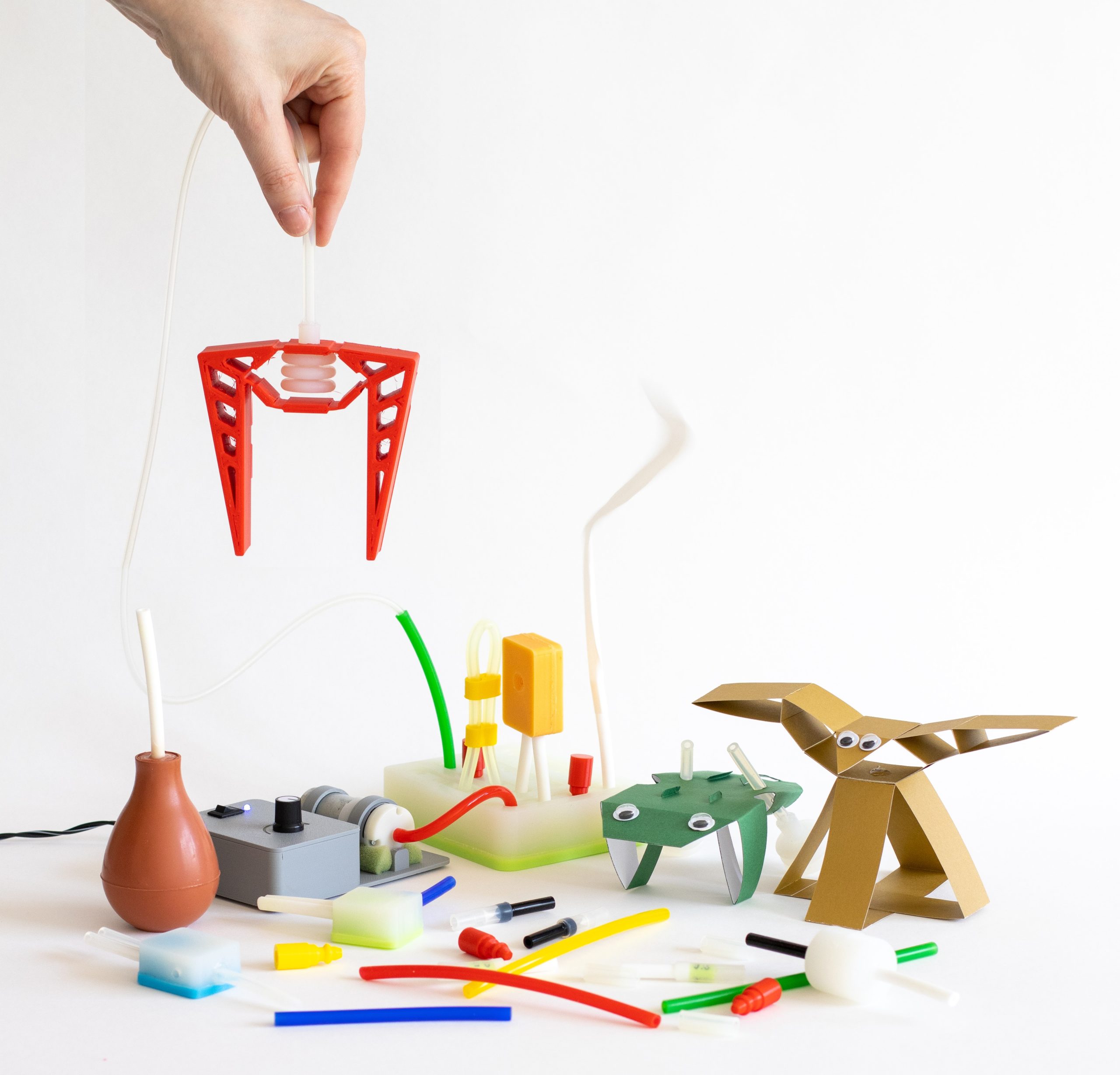
Expertise Areas and Professional Skills
For me, the most difficult aspect of this project was mediating between what was expected of me by AMOLF and the Industrial Design department.
At AMOLF the emphasis was placed more on doing engineering-oriented research, mainly designing and validating new fluidic components (see the blue area in the figure on the right). This meant I had to independently plan the project to fit within a design scope (by including users in the project, for example), and work on my development as a designer instead of an engineer.
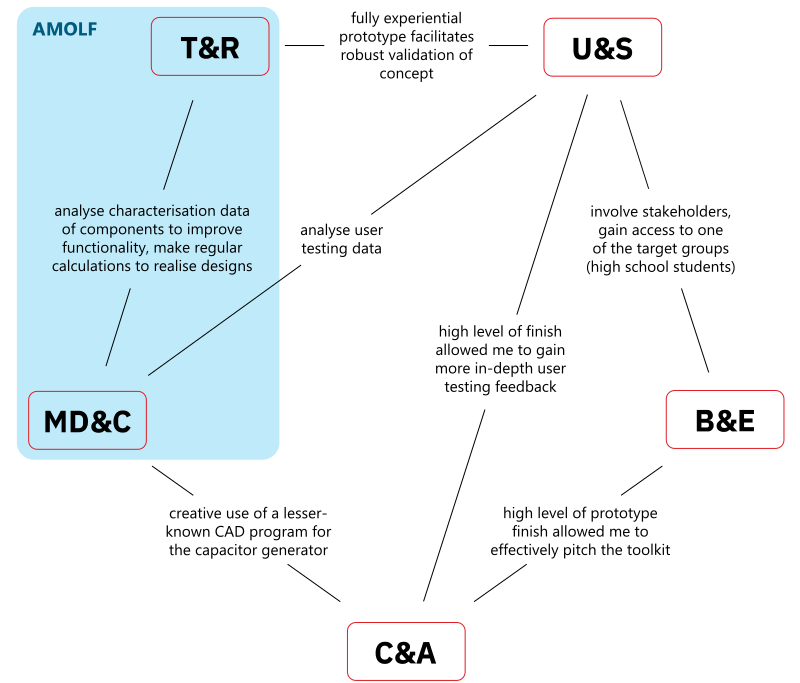
— Business & Entrepreneurship, Creativity & Aesthetics, User & Society
This was the first project in which I really applied my business skills. Due to my background running a language institute, I was able to bring my marketing knowledge to this project. I leveraged my pitching and presenting skills to onboard physics teachers from various schools (B&E). The high-quality photographs I took, as well as the high finish of the online platform and manual (C&A) helped me convince these parties to work with me. Their involvement helped me gather valuable expert input and gave me user testing opportunities with high school students that I otherwise would not have had (U&S).
— Technology & Realisation, Math, Data & Computing
As a designer, I place great value on fully experiential prototypes. To achieve this, I invested a great deal of time and effort into understanding the physics behind fluidic systems to design components that actually work (T&R). I learnt about mould design by doing research and I independently improved my CAD skills to be able to design all the components (and the required moulds) (T&R). The Microfabrication Methods course I took at the Mechanical Engineering department also gave me valuable insights here. I used the programming skills that I developed as a teaching assistant for Creative Programming to do frequent data analysis on the tests I ran on the components (MD&C). These skills also enabled me to develop the algorithm for the capacitor generator (MD&C).
— Creativity & Aesthetics, Technology & Realisation, User & Society
However, I wanted to go beyond what was expected of me at AMOLF in terms of component creation, also focussing on the aesthetic quality of the toolkit. I selected vibrant colours to make the toolkit look inviting and all the components have different colours to help tell them apart (C&A). The components were completed to a high level of finish, including the manual (C&A/T&R). This was mainly done to improve the experience of the user during user testing, so I could obtain more in-depth feedback (U&S).
Because of the communication and presenting skills I have built as a teacher and entrepreneur, I successfully showcased the toolkit at three academic conferences:
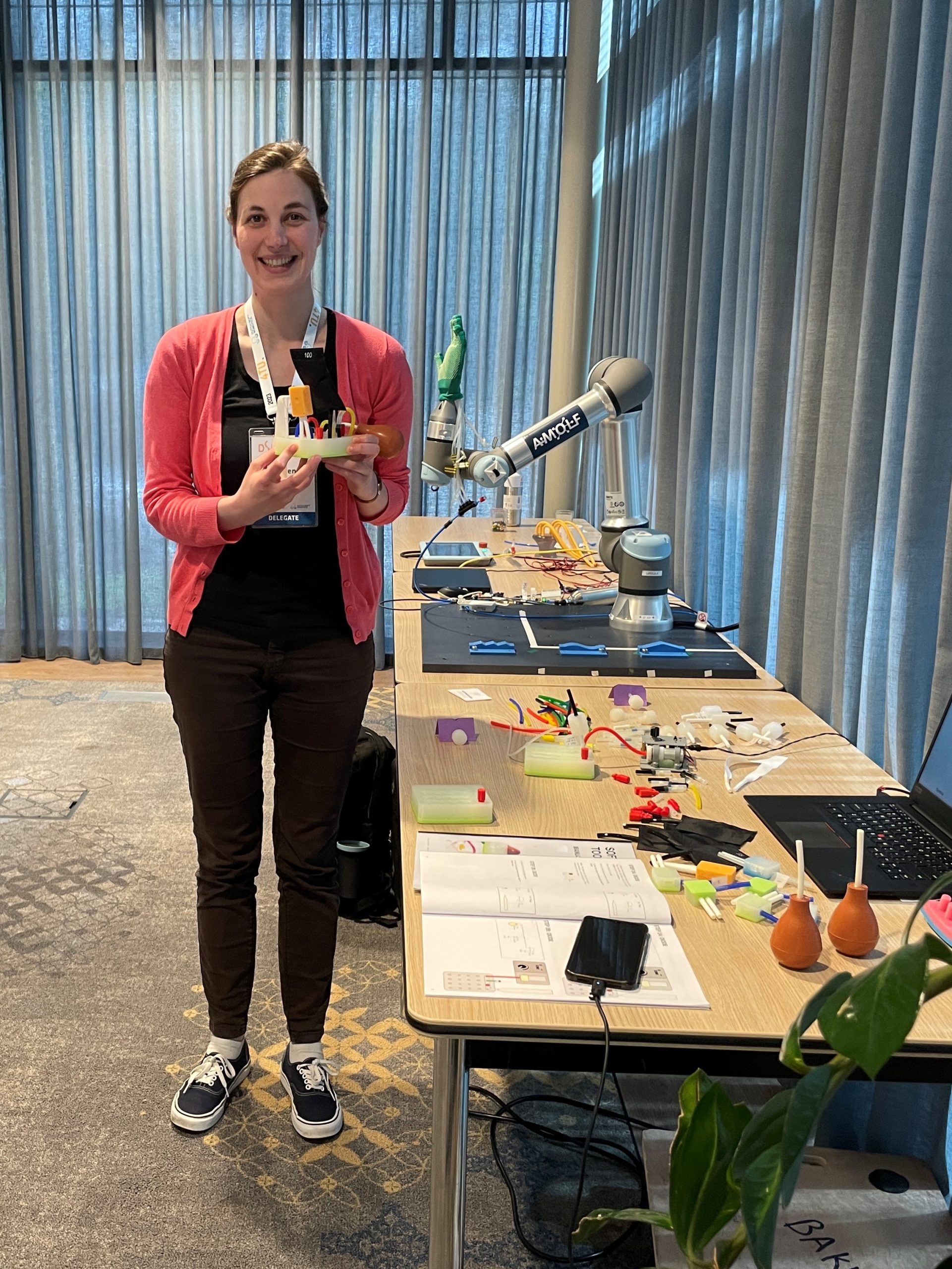
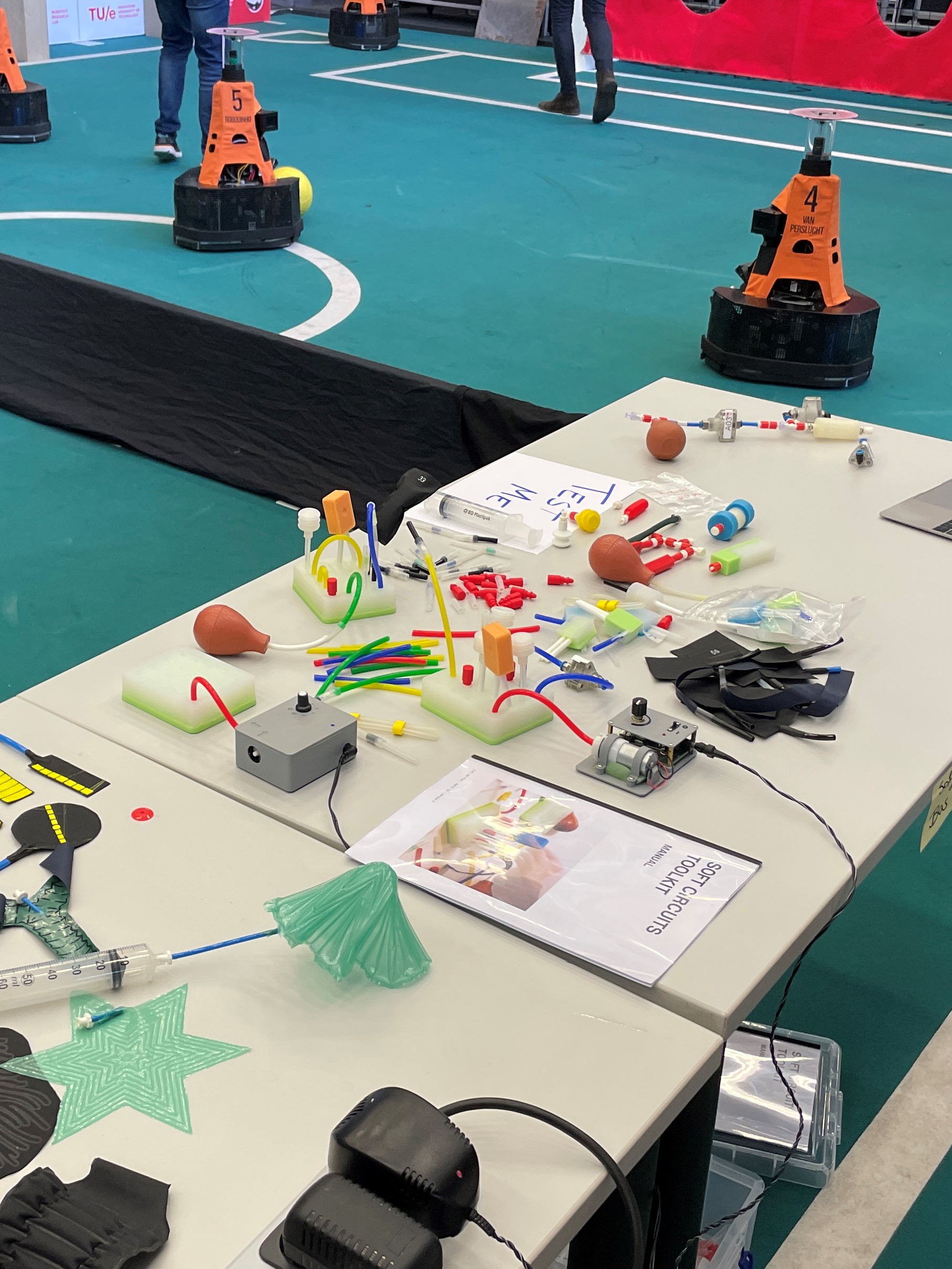
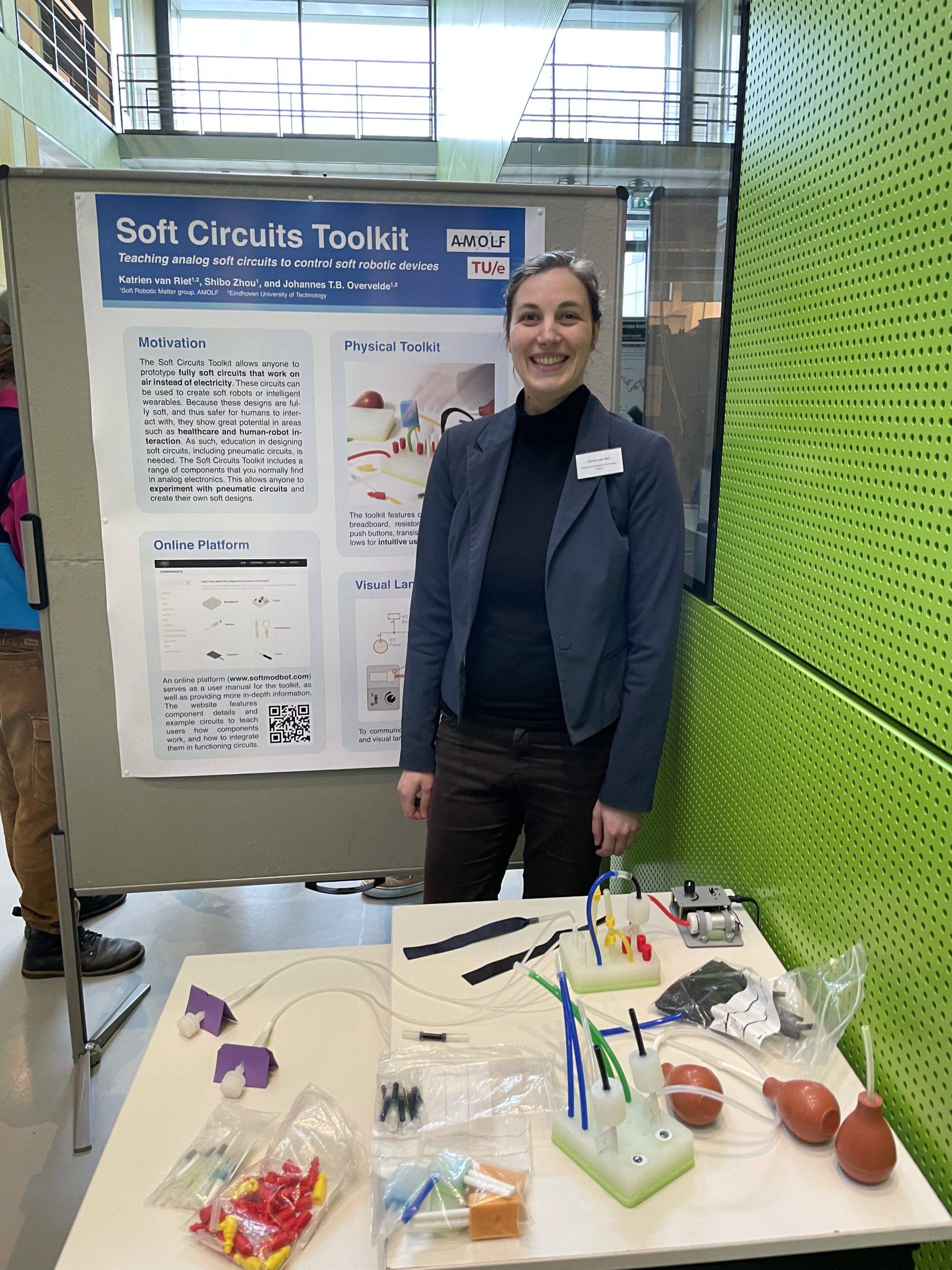
Main takeaways
My development this semester has mainly been in terms of becoming a design researcher.
- I learnt how to manage my notes and data over a year-project, which required attention to detail and organisation; I now have a well-organised system that works for me.
- I started collaborating with members of the AMOLF group: I am a collaborator in the work of another PhD student.
- I learnt how to juggle academic work on completely different projects: next to my graduation project, I worked on a publication from a previous group course for a design education conference. I presented the paper at the conference.
- At AMOLF, researchers frequently hack machines to gain new fabrication opportunities, such as a modified 3D printer that now acts as a heat sealing machine for TPU. I used this machine to fabricate the flag and capacitor components for the toolkit. This inspired me to start hacking my 3D printers in the same manner, and many of my hacks were later incorporated into the AMOLF machines.
Outlook
So far, we’ve received significant interest from schools and researchers regarding commercialisation of the toolkit, which hints at the viability of this product. Together with AMOLF, we’ve been pursuing the option of bringing the Soft Circuits Toolkit to market by working with external parties. I believe that this product could be a valuable asset to schools and soft robotics labs. This has been a great learning opportunity for me to become more familiar with large-scale production techniques, and adapting my design to bring it to market.
